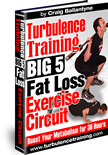Monday, July 27, 2009
 Hi,
Hi,
Just got back from the gym where I saw 7 different people wasting their time on ineffective ab training.
And that's really sad. After all, almost everyone goes to the gym to get a flat stomach, but 90% of people are doing the wrong workouts and will never achieve their goals!
In fact, most people make these 3 ab workout mistakes...Check out this article by Craig Ballantyne, CSCS, MS, and author of dozens of workouts in Men's Health Magazine...
Myth #1 - You Have to Do Hundreds of Crunches and Sit ups To Burn Fat and Get Flat Abs
If you rely on boring, back-breaking abdominal crunches and sit-ups to burn belly fat, you'll never lose the ugly belly fat covering your abs.
TIP: To work your abs hard, use total-body abdominal exercises instead, such as stability ball rollouts and stability ball jackknives.
Myth #2 - In Just Four Easy Payments of $29.99, You Can Buy a Miracle-Working Six Pack Ab Machine From a Late-Night informercial
Ha! I wish one of those abdominal exercise contraptions worked half as good as the so-called "experts" say, but infomercial gadgets don't burn belly fat or flatten your abs (they only burn your money and flatten your wallet!).
TIP: To get more fat burning results in less workout time, use fat burning interval training three times per week for 20 minutes.
Myth #3 - You Have to do Ab Workouts Everyday to Get Six Pack Abs
Not true! In fact, one of the secrets of top fat loss trainers is to drop boring, repetitive ab exercises and replace them with total-body abdominal exercises you only need to do for a few
minutes three times per week.
TIP: Use resistance in your ab exercises, such as cable crunches, using a weight that allows you to do 10-15 reps per set, and train your abs only twice per week.
For more ab training workouts and tips from Craig, visit:
Let me know your Turbulence Training Success Stories,
Bishrul Hafi
Turbulence Training





















